Abstract
OBJECTIVE--To assess the clinical applicability of a prototype computed tomographic echocardiographic imaging probe in paediatric patients with congenital heart disease. DESIGN--A phased array echocardiographic transducer (64 elements, 5 MHz) mounted on a sliding carriage was used transthoracically in various positions on the chest. The transducer moves from the outflow tract to the apex of the heart in 0.5 to 1.3 mm increments and records a tomographic slice of the heart at each increment level. Parallel images are recorded at a frame rate of 25-30 images/s. At each level a complete cardiac cycle is recorded. The images are digitised and stored in the image processing computer, which reconstructs the anatomical structures of the heart in a three-dimensional format by means of different grey scales. PATIENTS--45 paediatric patients (age range 3 days to 17 years) with various congenital heart defects who had been admitted to hospital for diagnostic or therapeutic cardiac catheterisation or surgery. RESULTS--Good quality echocardiographic pictures were obtained in all but two of the 45 patients. Three-dimensional reconstructions of the heart were possible from transthoracic echocardiograms. The recorded cardiac chambers and valves were displayed in three-dimensions in real time (four-dimensionally). The heart was also displayed in real time in any desired plane and in up to five planes simultaneously without having to change the position of the transducer on the chest. Different parts of the heart were displayed in a view similar to that seen by a surgeon during an operation. Image acquisition took 3-5 minutes and three-dimensional reconstruction of various cardiac structures 20-90 minutes. CONCLUSIONS--The computed tomographic imaging probe facilitates acquisition of echocardiographic data as multiple planes can be obtained from one transducer position. Display of three-dimensional structures of the heart may enhance the understanding of cardiac anatomy.
Full text
PDF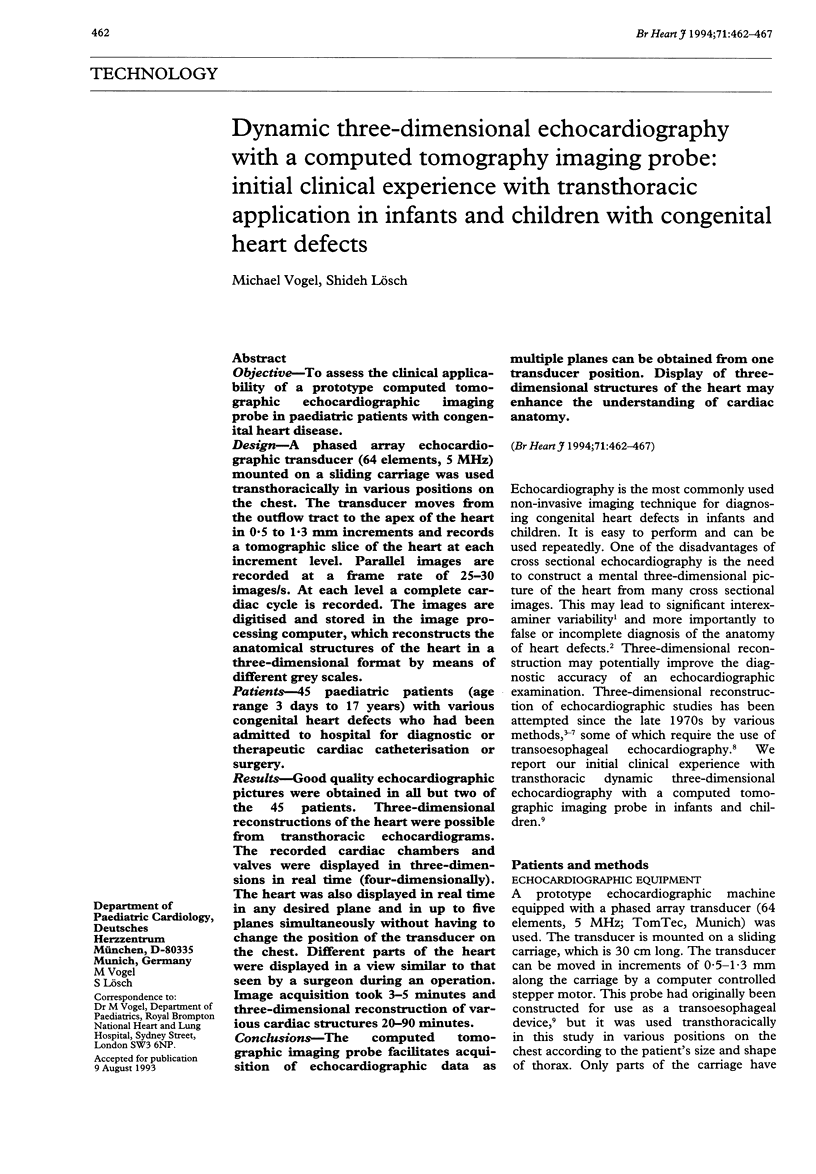
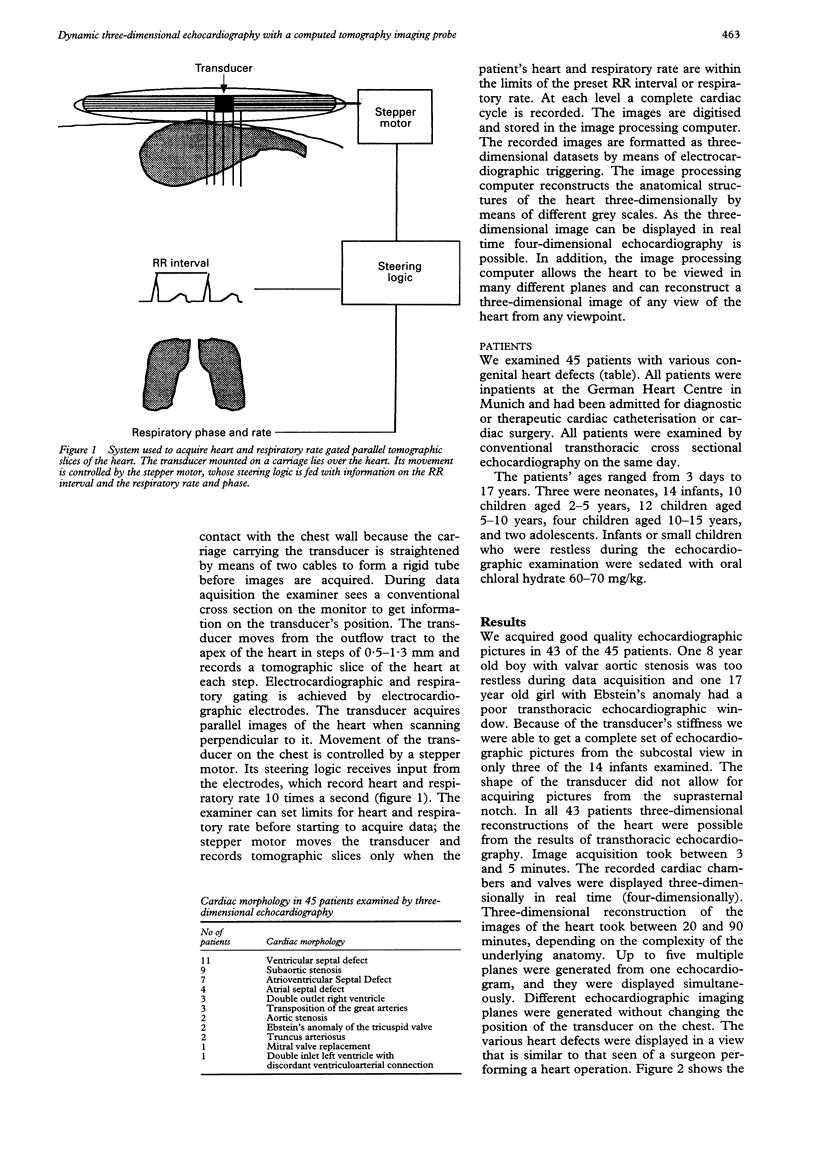
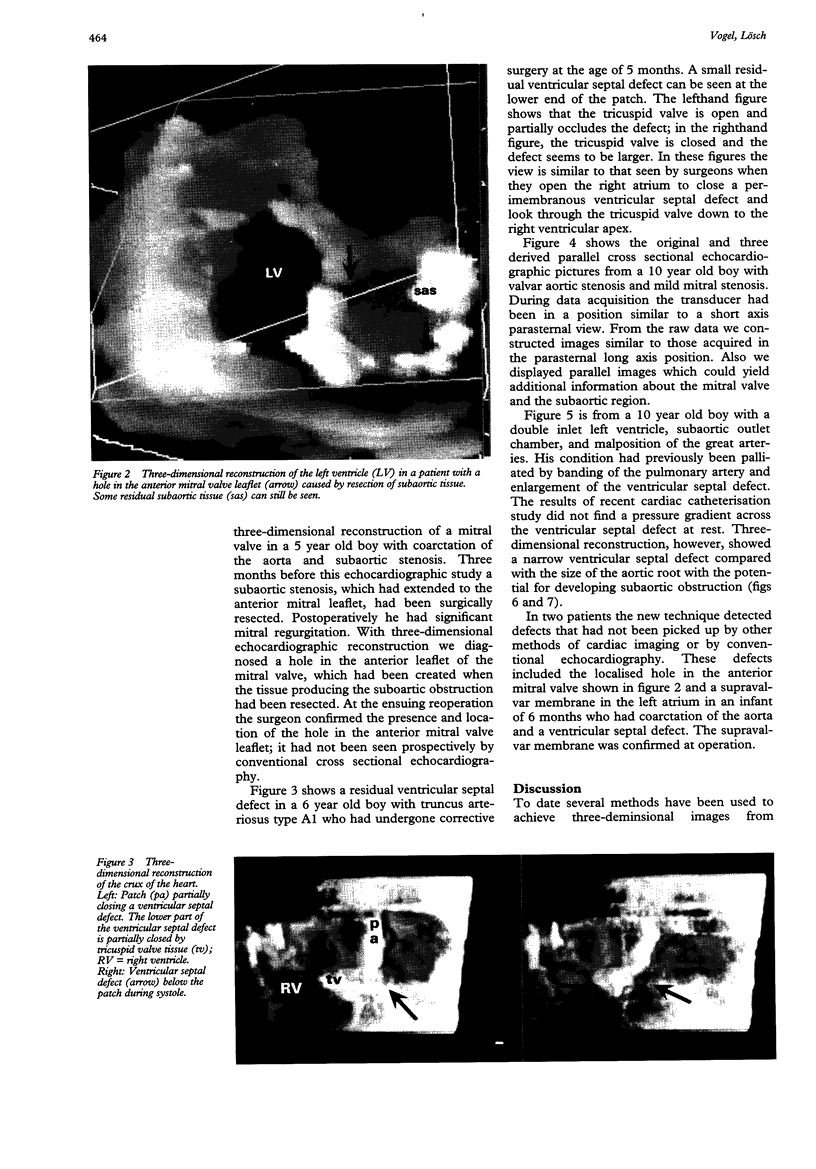
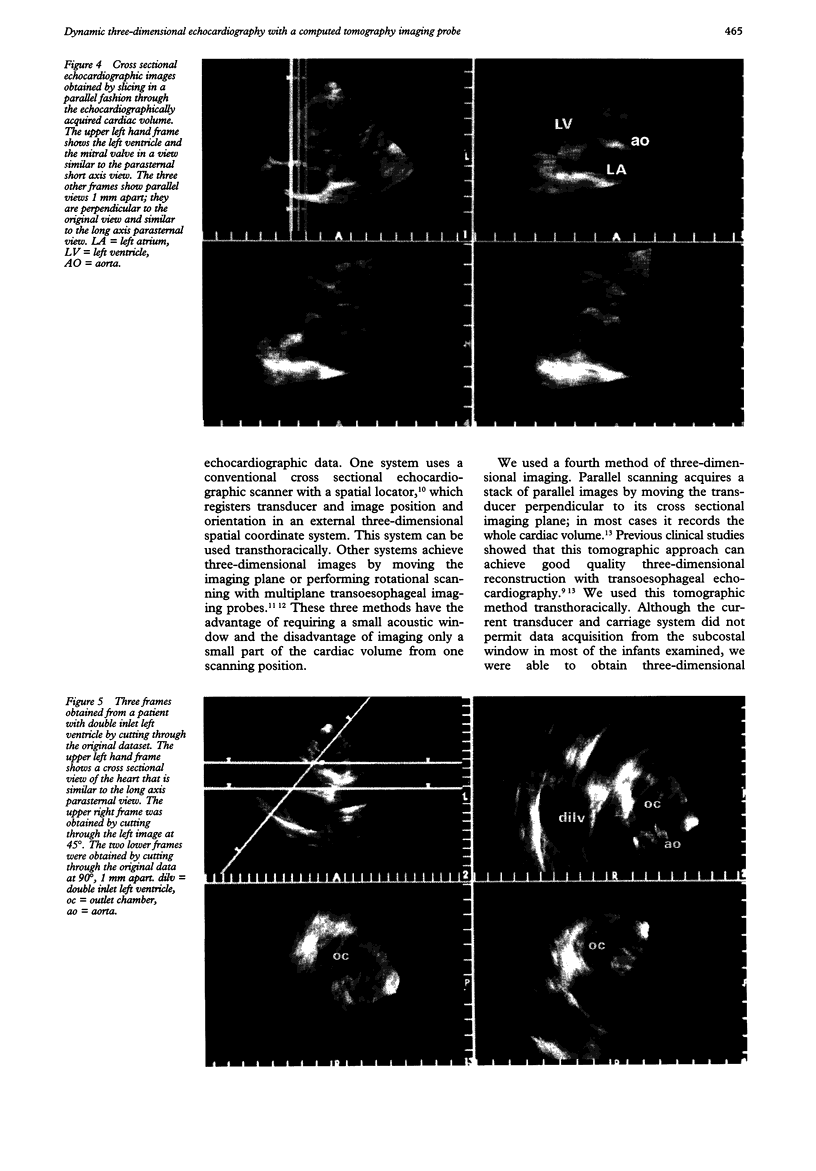
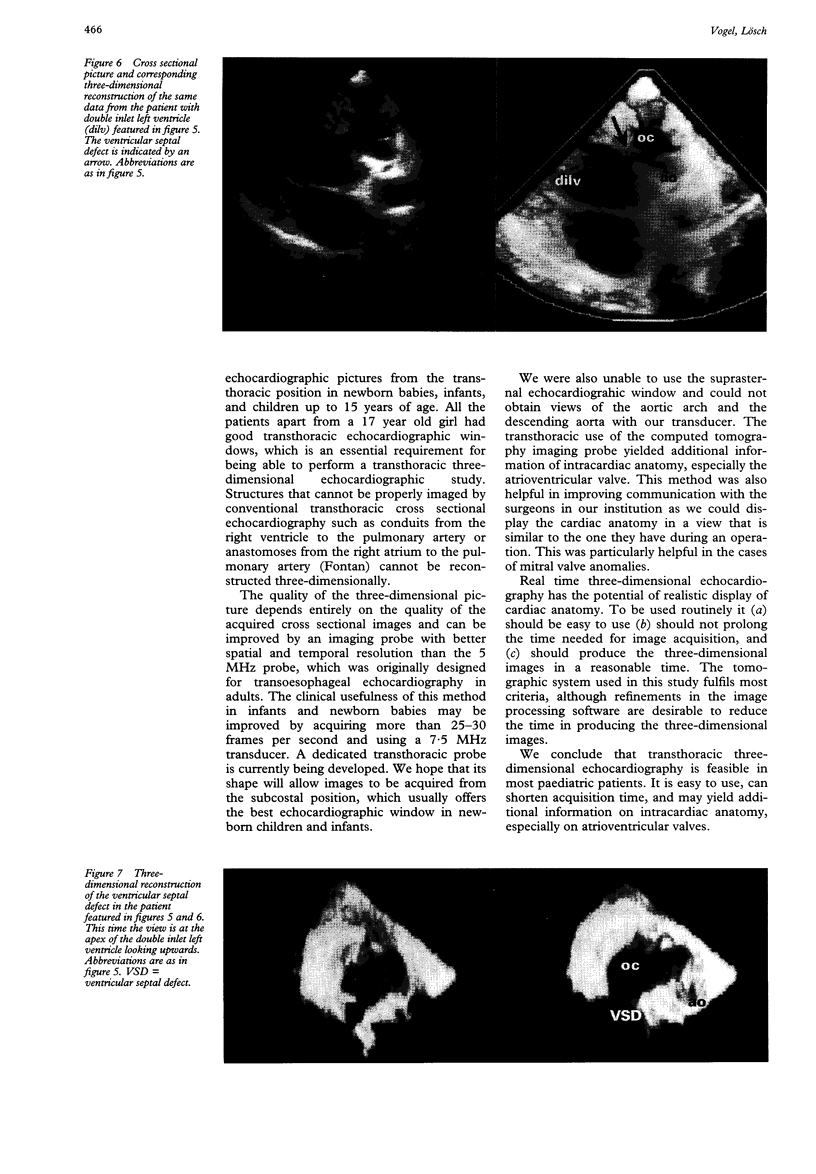
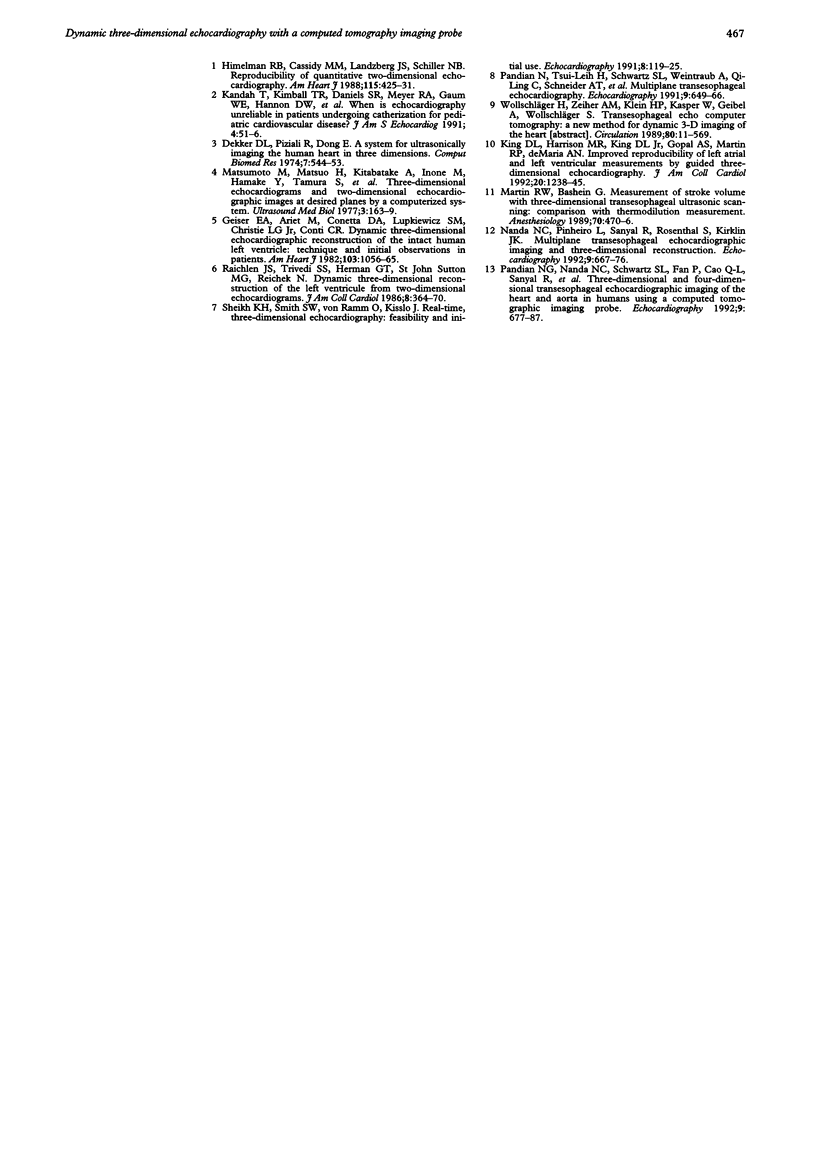
Images in this article
Selected References
These references are in PubMed. This may not be the complete list of references from this article.
- Dekker D. L., Piziali R. L., Dong E., Jr A system for ultrasonically imaging the human heart in three dimensions. Comput Biomed Res. 1974 Dec;7(6):544–553. doi: 10.1016/0010-4809(74)90031-7. [DOI] [PubMed] [Google Scholar]
- Geiser E. A., Ariet M., Conetta D. A., Lupkiewicz S. M., Christie L. G., Jr, Conti C. R. Dynamic three-dimensional echocardiographic reconstruction of the intact human left ventricle: technique and initial observations in patients. Am Heart J. 1982 Jun;103(6):1056–1065. doi: 10.1016/0002-8703(82)90569-5. [DOI] [PubMed] [Google Scholar]
- Himelman R. B., Cassidy M. M., Landzberg J. S., Schiller N. B. Reproducibility of quantitative two-dimensional echocardiography. Am Heart J. 1988 Feb;115(2):425–431. doi: 10.1016/0002-8703(88)90491-7. [DOI] [PubMed] [Google Scholar]
- Kandah T., Kimball T. R., Daniels S. R., Meyer R. A., Gaum W. E., Hannon D. W., Morrison S., Schwartz D. C. When is echocardiography unreliable in patients undergoing catheterization for pediatric cardiovascular disease? J Am Soc Echocardiogr. 1991 Jan-Feb;4(1):51–56. doi: 10.1016/s0894-7317(14)80160-0. [DOI] [PubMed] [Google Scholar]
- Martin R. W., Bashein G. Measurement of stroke volume with three-dimensional transesophageal ultrasonic scanning: comparison with thermodilution measurement. Anesthesiology. 1989 Mar;70(3):470–476. doi: 10.1097/00000542-198903000-00017. [DOI] [PubMed] [Google Scholar]
- Matsumoto M., Matsuo H., Kitabatake A., Inoue M., Hamanaka Y., Tamura S., Tanaka K., Abe H. Three-dimensional echocardiograms and two-dimensional echocardiographic images at desired planes by a computerized system. Ultrasound Med Biol. 1977;3(2-3):163–178. doi: 10.1016/0301-5629(77)90068-0. [DOI] [PubMed] [Google Scholar]
- Pandian N. G., Nanda N. C., Schwartz S. L., Fan P., Cao Q. L., Sanyal R., Hsu T. L., Mumm B., Wollschläger H., Weintraub A. Three-dimensional and four-dimensional transesophageal echocardiographic imaging of the heart and aorta in humans using a computed tomographic imaging probe. Echocardiography. 1992 Nov;9(6):677–687. doi: 10.1111/j.1540-8175.1992.tb00513.x. [DOI] [PubMed] [Google Scholar]
- Raichlen J. S., Trivedi S. S., Herman G. T., St John Sutton M. G., Reichek N. Dynamic three-dimensional reconstruction of the left ventricle from two-dimensional echocardiograms. J Am Coll Cardiol. 1986 Aug;8(2):364–370. doi: 10.1016/s0735-1097(86)80052-3. [DOI] [PubMed] [Google Scholar]
- Sheikh K., Smith S. W., von Ramm O., Kisslo J. Real-time, three-dimensional echocardiography: feasibility and initial use. Echocardiography. 1991 Jan;8(1):119–125. doi: 10.1111/j.1540-8175.1991.tb01409.x. [DOI] [PubMed] [Google Scholar]
- Wollschläger H., Zeiher A. M., Klein H. P., Kasper W., Wollschläger S., Geibel A., Just H. Transösophageale Echo Computer Tomographie ("ECHO-CT"): eine neue Methode zur dynamischen 3-D Rekonstruktion des Herzens. Biomed Tech (Berl) 1989;34 (Suppl):10–11. [PubMed] [Google Scholar]








